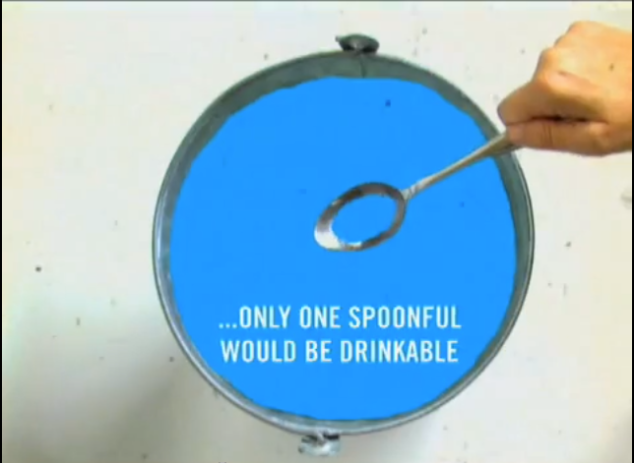70% of the world is covered in water. With water so abundant why do we need to conserve and be concious of water consumption? 97% of the world’s water is found in oceans; a very small percentage of water is freshwater. A GOOD Magazine transparency offers a staggering illustration of this statistic: if all the world’s water were poured into a bucket only one spoonful would be drinkable.
It’s a great travesty that humans haven’t evolved to drink salt water because it’s so abundant. I’m always amazed when science finds a way to utilize this vast resource, which is why the good folks at GE just blew my mind with their new project the M-100 Chlorinator. The bright innovators at GE partnered with the Nonprofit WaterStep created a process which uses electrolysis to decontaminate dirty ground water!
How does this work and where does the salt water come in?
“The device fits inside a 10-inch PVC cylinder with two plastic tubes attached at the top. It strips chlorine from salt water by applying battery voltage across a circular membrane, a process called electrolysis. The chlorine bubbles off one of the electrodes and floats to the top where the device captures it and mixes it with contaminated water. The chlorine begins to oxidize organic matter and kills the pathogens in the water. The water is usually safe to drink two hours after chlorination.”
I was so elated when I came across this technology. Not only did the use of electrolysis summon memories of AP Chem labs with my snarky high school teacher, but also stunned me in its simplicity. This isn’t new technology; it’s a new application. This also takes a great stride towards clean drinking water for everyone.
I stumbled upon this today and felt the urge to share! I have a feeling similar “blurbs” will become quite common.